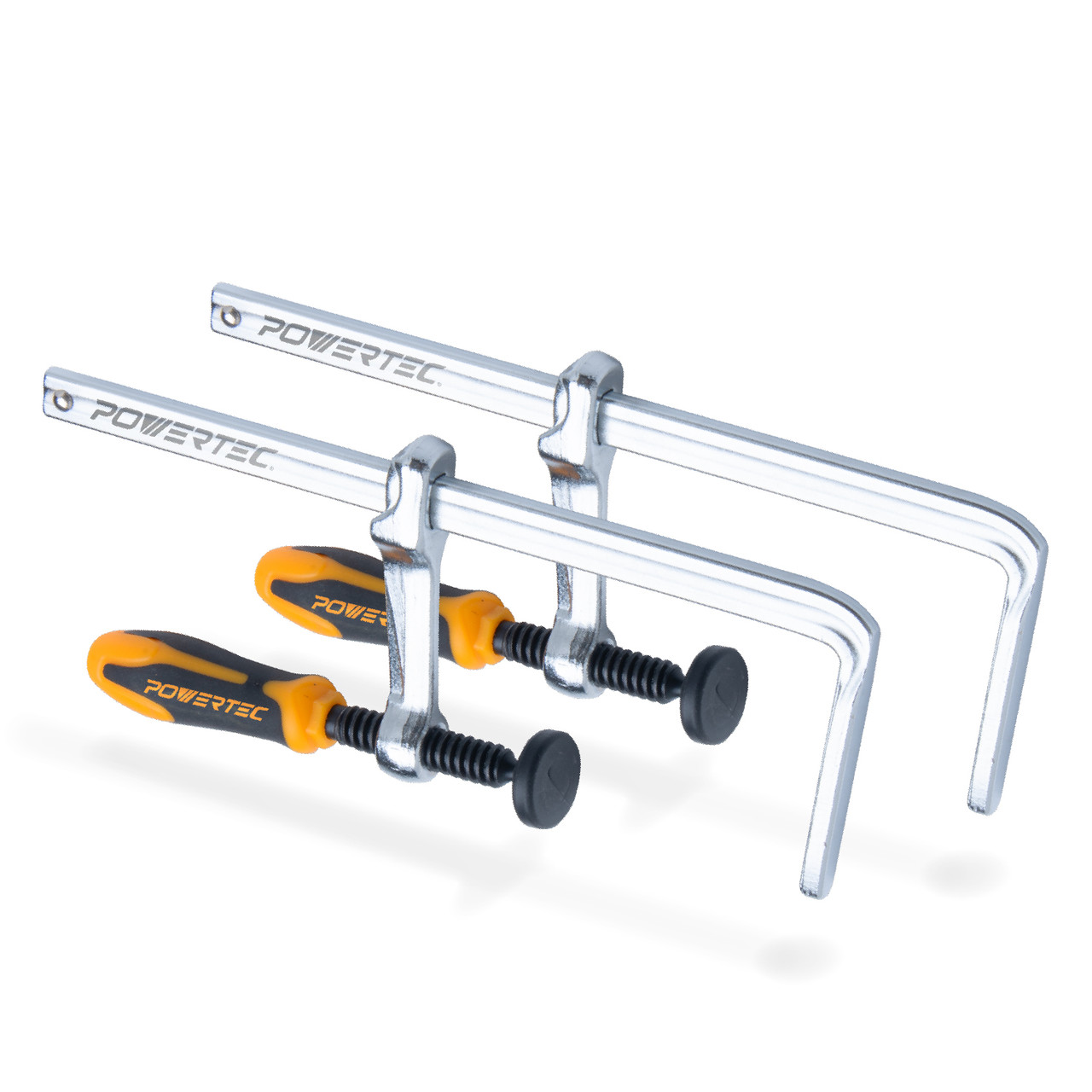The best woodworking screws are typically made of stainless steel or brass for durability and corrosion resistance. These materials provide optimal strength and longevity for woodworking projects.
Woodworking requires precise and high-quality screws to ensure the structural integrity of the finished piece. Choosing the right screws can make a significant difference in the longevity and overall quality of your project. We will explore the key factors to consider when selecting the best screws for woodworking applications.
From different types of screws to their ideal uses, understanding these aspects will help you make informed decisions for your woodworking projects. So, let’s dive into the world of woodworking screws and discover how to choose the best ones for your needs.

Credit: www.ebay.com
Choosing The Right Woodworking Screws
When embarking on a woodworking project, selecting the appropriate screws is crucial for ensuring the structural integrity and longevity of your creations. From securing joints to fastening pieces together, the type of screw you choose can make a significant impact on the final outcome.
Types Of Woodworking Screws
Woodworking screws come in various shapes and sizes, each designed for specific applications in woodworking projects. Some common types include:
- Wood Screws
- Deck Screws
- Particle Board Screws
- Drywall Screws
Factors To Consider When Selecting Screws
Several factors must be considered when choosing the right woodworking screws for your project:
- Material: Ensure the screw material is compatible with the type of wood you are working with.
- Size: Choose the appropriate screw length and diameter based on the thickness of the wood.
- Head Type: Consider the head type (flat head, round head, etc.) based on the desired finish and functionality.
- Thread Type: Select the thread type (coarse, fine) depending on the application and wood type.
- Drive Type: Determine the drive type (Phillips, square, Torx) for ease of installation and removal.
Top Woodworking Screws For Different Projects
Top Woodworking Screws for Different Projects: Choosing the right screws is crucial for successful woodworking projects. Whether you are working on furniture making or outdoor woodworking, selecting the appropriate screws can make a significant difference in the outcome of your project. Let’s explore the top woodworking screws for various projects:
Screws For Furniture Making
- Use pocket hole screws for joining wood pieces in furniture making.
- Wood screws with deep threads provide strong connections for furniture assembly.
- For hardwood furniture, consider using brass screws to prevent corrosion.
Screws For Outdoor Woodworking Projects
- Stainless steel screws are ideal for outdoor woodworking projects due to their corrosion resistance.
- Deck screws with special coatings offer durability and weather resistance for outdoor structures.
- When working with treated lumber outdoors, opt for galvanized screws to prevent rusting.
Enhancing Woodworking Efficiency With Screws
Importance Of Using The Correct Screws
Choosing the right screws is crucial for woodworking projects. Mismatched screws can lead to weaker joints and put the entire structure at risk. Moreover, using the correct screws ensures that the wood is safely anchored and prevents splitting. Proper screw selection also helps to maintain the overall aesthetic and structural integrity of your woodworking creations.
Optimizing Fastening Techniques With Screws
Utilizing the appropriate screws can significantly enhance your fastening techniques. Advanced screw designs provide improved grip and resistance, enabling more efficient and durable connections. Additionally, employing the right screws allows for streamlined assembly processes and reduces the risk of damage to the wood during installation. This optimization helps to maximize productivity while maintaining high-quality workmanship in woodworking projects.
Tips For Proper Screw Installation
For proper screw installation in woodworking, select screws appropriate for the wood type and project. Pre-drill pilot holes to prevent splitting and ensure a snug fit. Use the right screwdriver or drill bit size and avoid overtightening to prevent damage to the wood.
Introduction
Proper screw installation is essential for achieving strong and lasting joints in woodworking projects. By following a few important tips, you can ensure that your screws are properly installed, maximizing their holding power and preventing any potential issues down the line. In this article, we’ll discuss the key aspects of preparation and planning, as well as how to ensure strong and lasting joints when working with woodworking screws.
Preparation And Planning
Preparation and planning are crucial steps before installing woodworking screws. By taking the time to prepare your materials and plan out the installation process, you can avoid potential complications and achieve better results. Here are a few tips to help you with preparation and planning:
- Choose the right screws: Consider the type of wood you’re working with and the specific requirements of your project. Different woodworking screws are designed for different applications, so select the appropriate type and size to ensure a secure fit.
- Mark the drill points: Before drilling pilot holes, mark the locations where the screws will be installed. Use a pencil or a marker to make clear, visible marks on the wood surface to guide your drilling.
- Measure and align: Take accurate measurements and ensure proper alignment of the pieces you’re joining together. Using a square or a level can help you double-check the accuracy of your measurements and alignment.
- Pre-drill pilot holes: It’s a good practice to pre-drill pilot holes to prevent the wood from splitting and to ensure the screw goes in straight. Choose a drill bit that matches the size of the screw’s shank and drill the pilot holes to the appropriate depth.
Ensuring Strong And Lasting Joints
Creating strong and lasting joints is the ultimate goal when installing woodworking screws. These joints not only keep your project intact but also provide stability and durability. Here are some tips to ensure strong and lasting joints:
- Apply adequate pressure: When driving the screws, apply consistent and steady pressure to ensure they penetrate the wood properly. Too much force can strip the screw or damage the wood, while too little force can result in a weak joint.
- Counterbore or countersink as needed: Depending on your project, you may need to counterbore or countersink the screw heads to achieve a flush or recessed surface. This not only enhances the aesthetics but also prevents the wood from splitting.
- Use wood glue for added strength: Applying a small amount of wood glue to the joint before driving the screws can greatly increase the joint’s strength. The glue acts as an additional adhesive, ensuring a secure bond for years to come.
- Do not overtighten: It’s important not to overtighten the screws as it can cause the wood to crack or weaken the joint. Stop tightening when the screw head is flush with the wood surface.
By following these tips for proper screw installation, you can optimize the strength and longevity of your woodworking joints. Taking the time to prepare, plan, and execute the installation process correctly will lead to more successful and enduring projects.
Future Innovations In Woodworking Screws
Are you a woodworking enthusiast looking for the best screws to bring your projects to life? Well, you’re in for a treat! In this blog post, we’ll explore the future innovations in woodworking screws and how they are revolutionizing the industry. From advancements in screw design and materials to their impact on the woodworking industry, we’ve got you covered!
Advancements In Screw Design And Materials
Woodworking screw manufacturers have been hard at work developing new and improved designs that are both functional and efficient. With the aim of making the installation process easier and the final product stronger, these innovations have transformed the way screws are used in woodworking projects.
One of the noteworthy advancements in screw design is the introduction of self-drilling screws. These screws feature a sharp point and fluted design, allowing them to create their own pilot holes as they are driven into the wood. This eliminates the need for pre-drilling, saving valuable time and effort during the construction process.
Materials used in woodworking screws have also seen significant improvements. Traditional screws were made of steel, which can be prone to rust and corrosion when exposed to moisture. However, manufacturers now offer screws made from stainless steel or coated with corrosion-resistant materials like zinc or ceramic. These advancements ensure that the screws retain their integrity and strength, even in challenging environments.
Impact On Woodworking Industry
The future innovations in woodworking screws have had a profound impact on the industry as a whole. Woodworkers now have access to screws that make their projects more efficient, reliable, and long-lasting. These advancements have not only improved the quality of finished products but have also simplified the woodworking process, allowing even beginners to achieve professional-level results.
Additionally, the availability of screws specifically designed for different woodworking applications has given woodworkers a wider range of options. Whether it’s for cabinetry, furniture, or outdoor projects, there is a screw that meets the unique requirements of each application. This enables woodworkers to choose the most suitable screws for their projects, ensuring optimal performance and durability.
In conclusion, future innovations in woodworking screws have brought about significant improvements in both design and materials. These advancements have positively impacted the woodworking industry, making projects more efficient, reliable, and accessible to woodworkers of all skill levels. So, why settle for ordinary screws when you can embrace the future of woodworking with these innovative solutions? Give them a try and experience the difference yourself!

Credit: powertecproducts.com
Frequently Asked Questions For Best Woodworking Screws
What Are The Best Screws For Woodworking Projects?
The best screws for woodworking projects are typically wood screws. They have a sharp point, deep threads, and are made of high-quality materials like stainless steel or brass. These screws offer excellent grip, durability, and resistance to corrosion, making them ideal for woodworking applications.
What Size Screws Should I Use For Woodworking?
The size of the screws you should use for woodworking depends on the specific project. As a general guideline, you can use #8 or #10 screws for most woodworking applications. For larger projects or heavy-duty tasks, you may need to use larger screws, such as #12 or #14.
Are Phillips Or Square Drive Screws Better For Woodworking?
Both Phillips and square drive screws are commonly used in woodworking. However, square drive screws are generally considered better because they offer more driving power and are less likely to slip or strip during installation. They also provide better control and reduce the risk of damaging the wood surface.
Can I Use Regular Screws For Woodworking?
Regular screws can be used for simple woodworking projects or non-structural applications. However, it is recommended to use specialized wood screws for woodworking projects. Regular screws may not have the necessary features such as sharp points, deep threads, or corrosion resistance, which are essential for long-lasting and secure wood joints.
Conclusion
In sum, choosing the right woodworking screws is crucial for project success. Consider the material, length, and thread type to ensure a strong and lasting hold. By selecting screws that match your specific needs, you can achieve top-notch results and elevate your woodworking skills.
Make informed decisions that will enhance the quality and durability of your projects.


